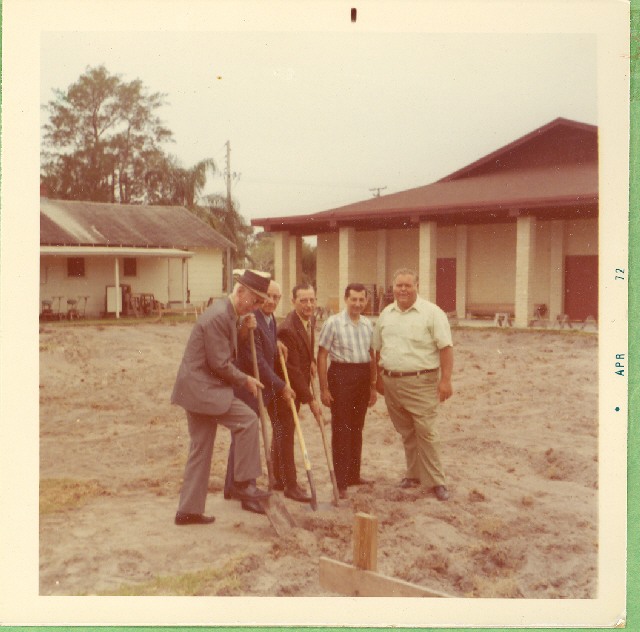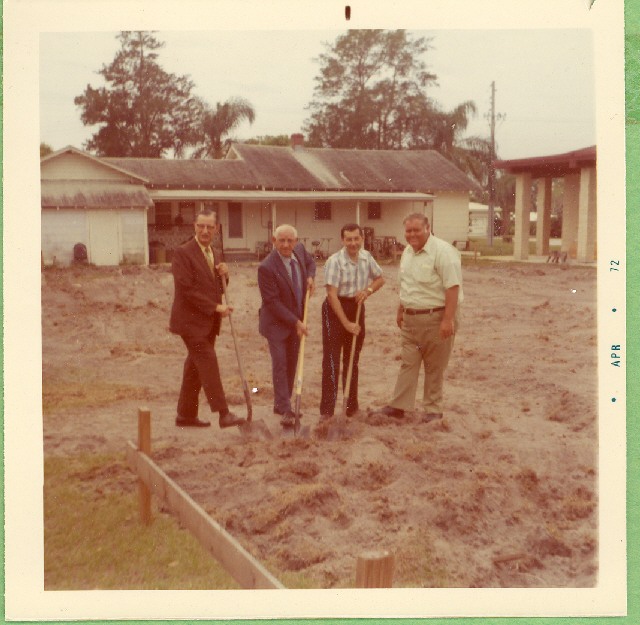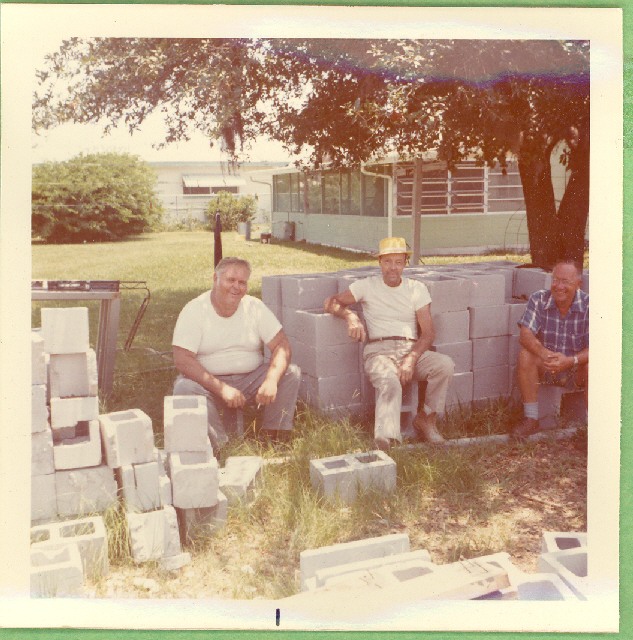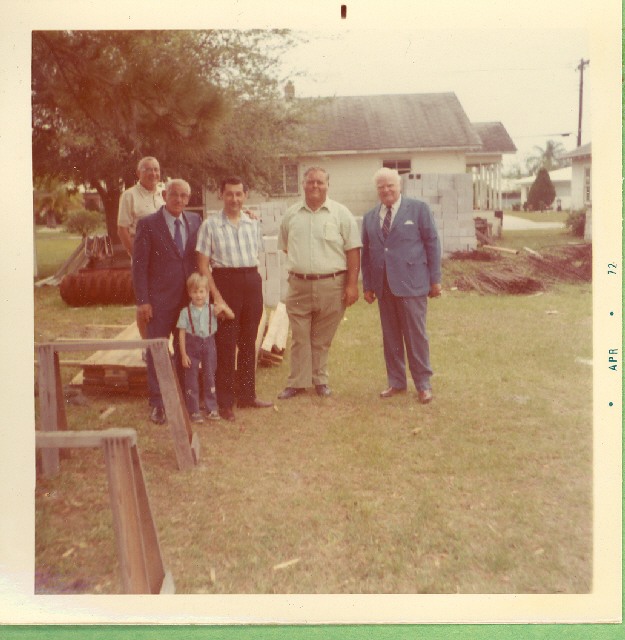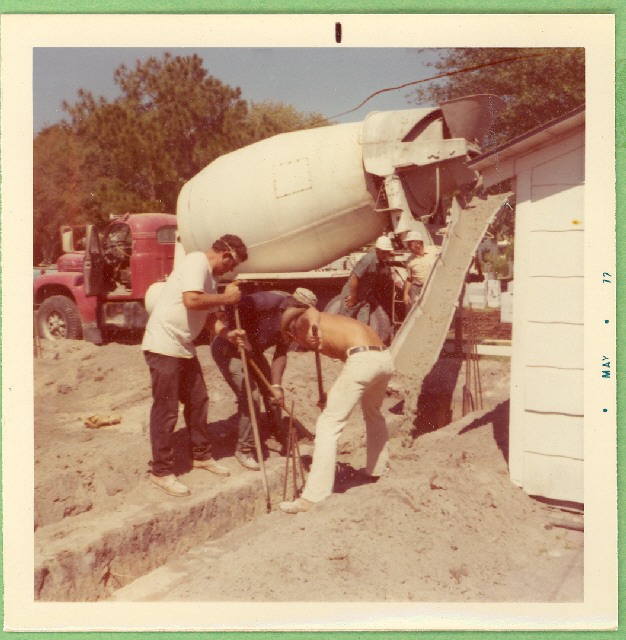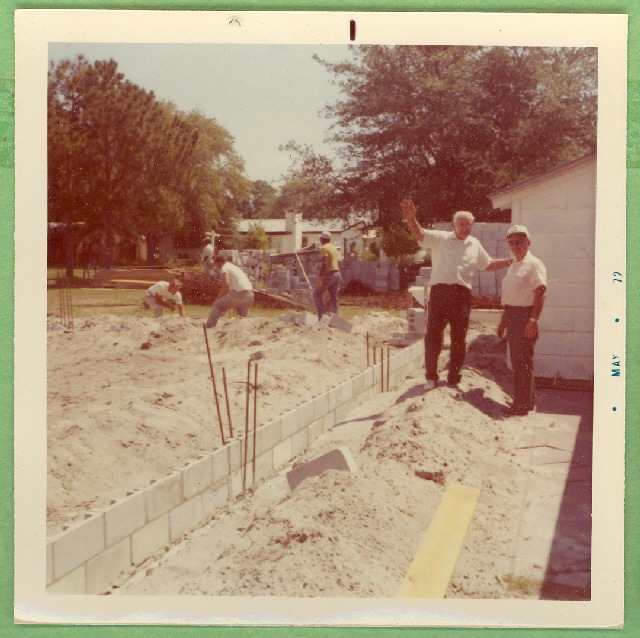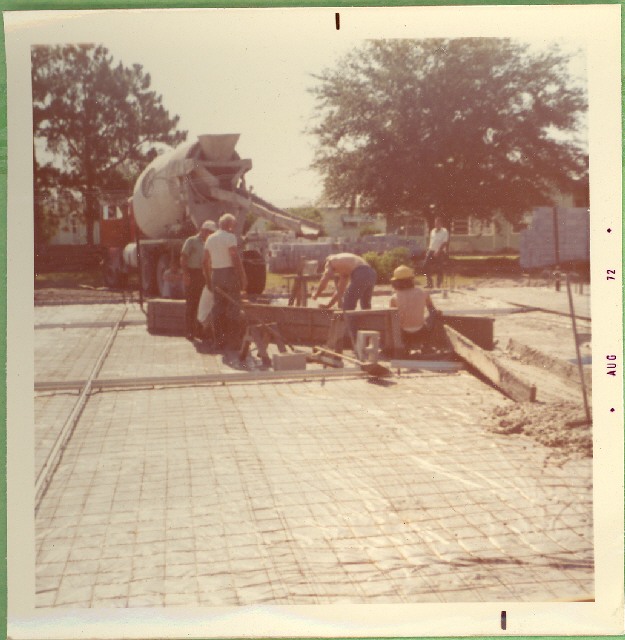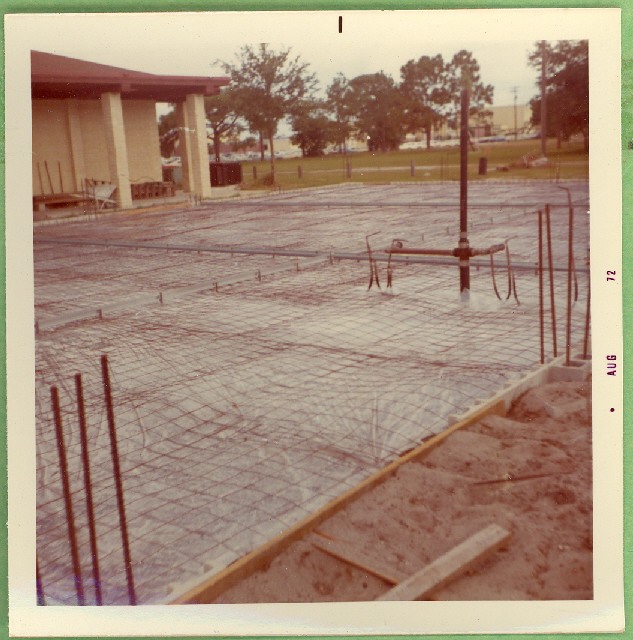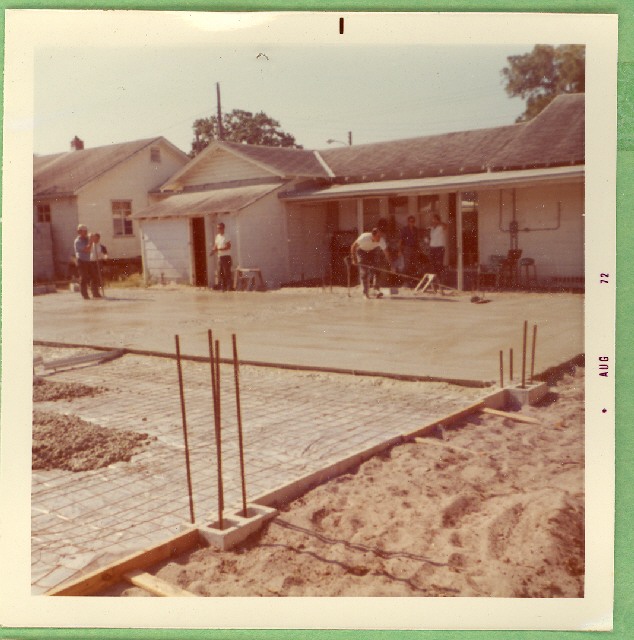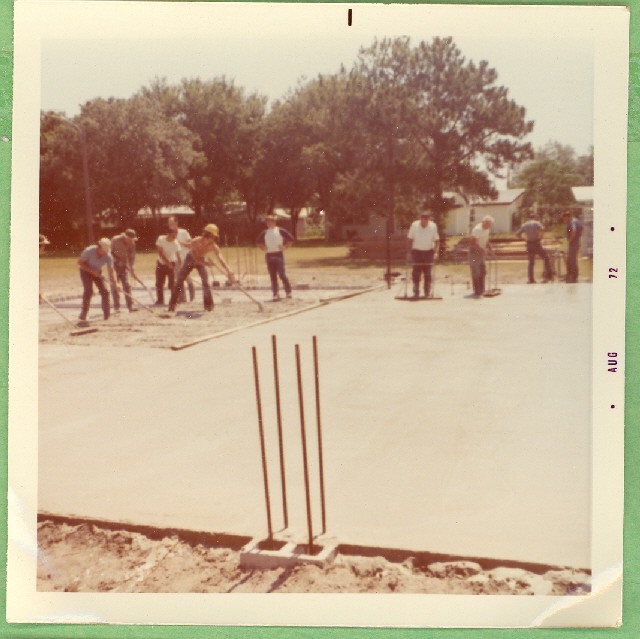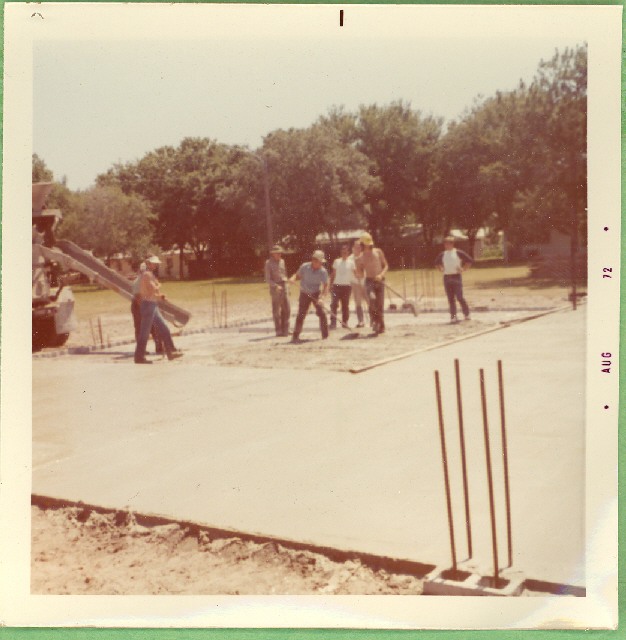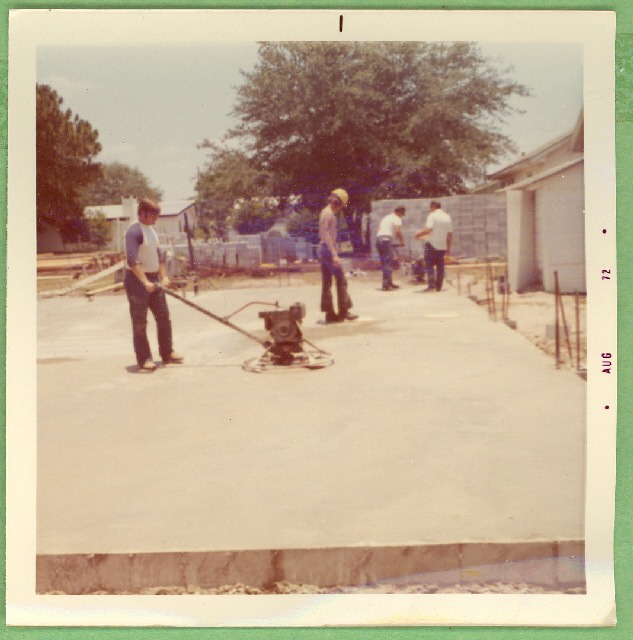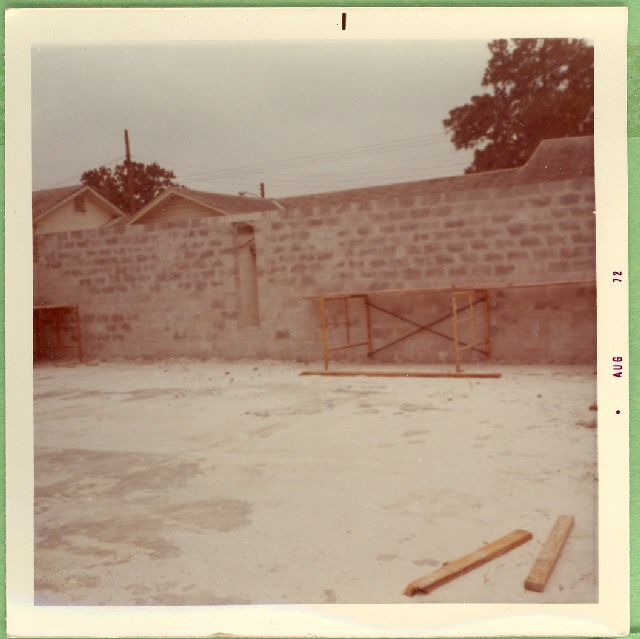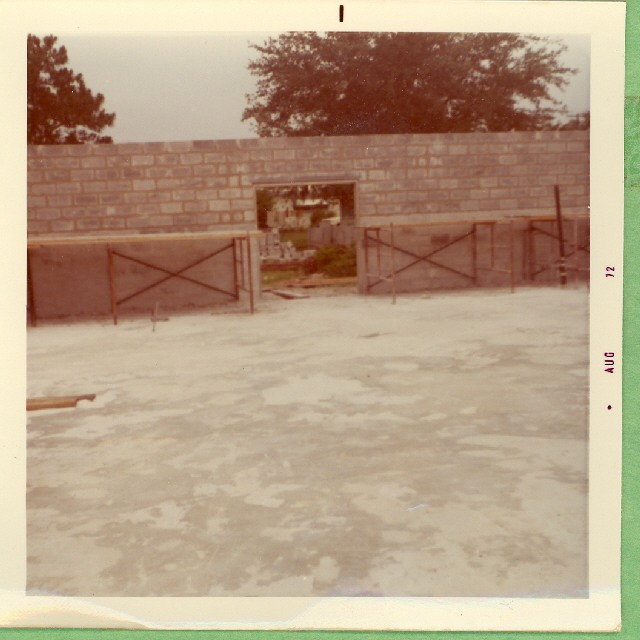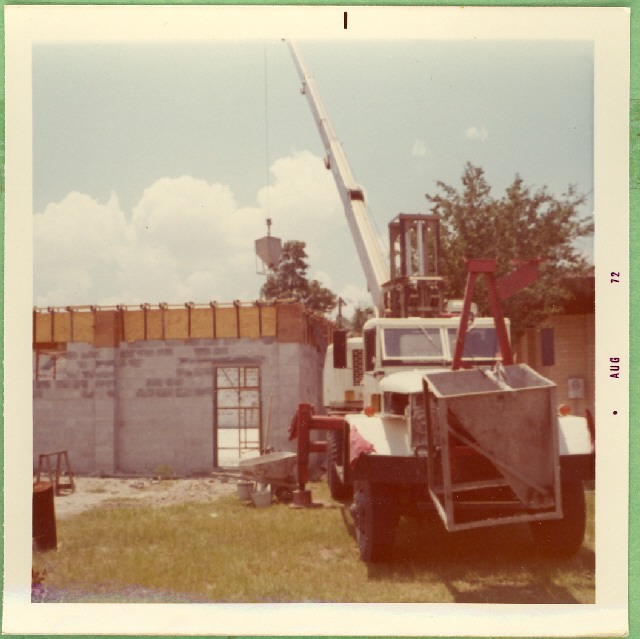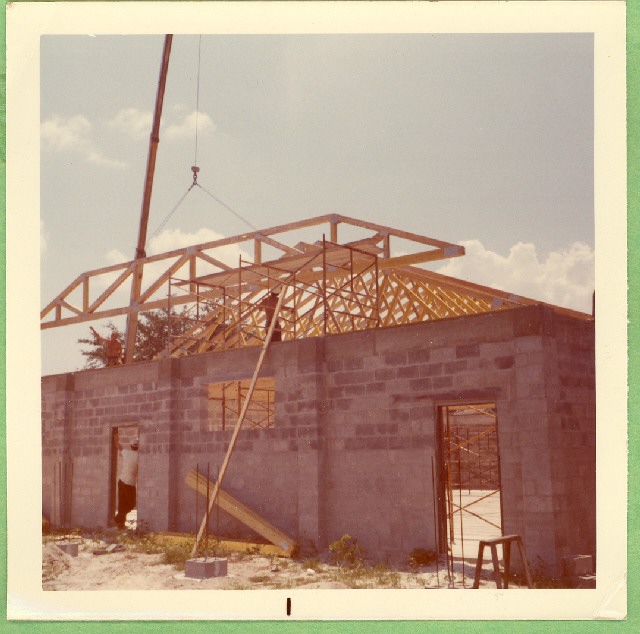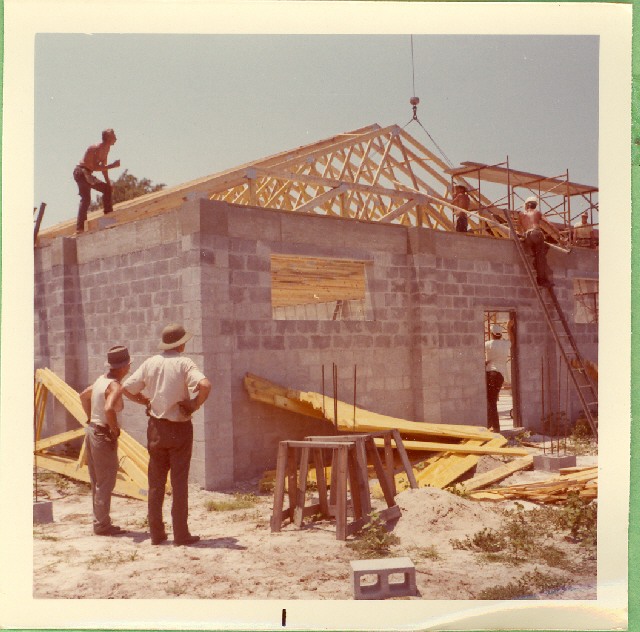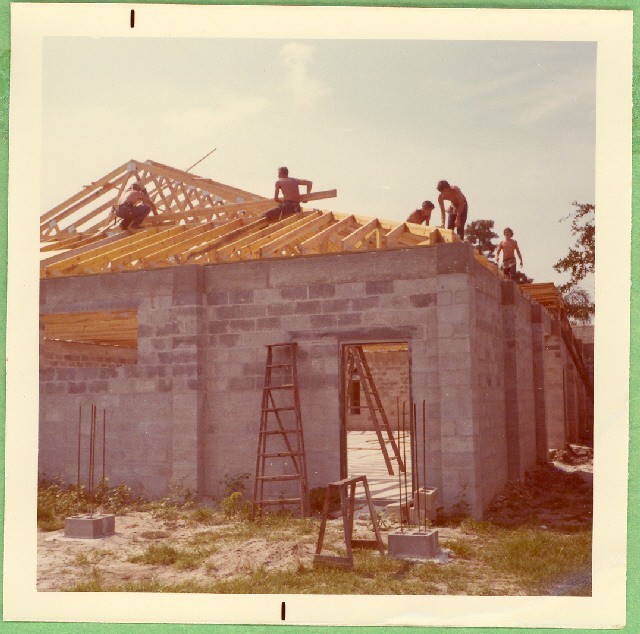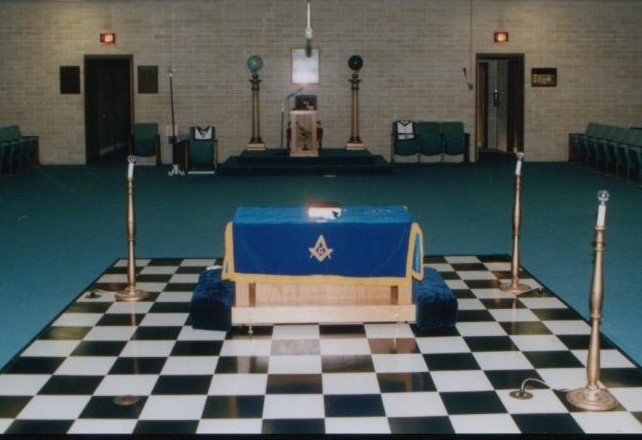
So We Build
A Brief HistoryThe earliest records of this Lodge are of a meeting held March 23rd 1891, while the Lodge was under dispensation. This was probably one of the first formal meetings of the Lodge, as it occurred not a great time after the meeting of the Grand Lodge when the dispensation was granted, and the Lodge also took action at that time fixing the amount of the fees for the degrees. The original members of the Lodge seem, from the minutes to have been: W.F. White, the first Master who passed away December 12, 1915, M. Joel Mc Mullen who demitted December 27, 1912, G.W. Trask, who passed away April 10, 1908, J.K. Munnerlyn who demitted December 24, 1901, W.A. Hart who passed away April 21, 1915,and E.D. Shaw who passed away February 9, 1909, making seven in all, the smallest number to which a dispensation is granted. The Lodge just doubled in number during the year of its dispensation, admitting three by affiliation and Raising four. The first initiate of the new Lodge was J.E. Crane, who was given the first degree April 21, 1891; Passed January 12, 1892; and Raised April 12, 1892. He demitted December 27, 1892. At the meeting of the Grand Lodge of Florida of 1916, Brother Crane was elected Grand Master of the Craft throughout the state. The first meeting of the Lodge after the receipt of the charter, which was granted January 20, 1892, Angus Paterson being Grand Master, was on February 9, 1892, at which time the following officers were installed by Brothers Webster and B. McMullen of Star Lodge No. 78. Worshipful Master, W. F. White The other Master Masons of the Lodge at this time were: Brothers E.D. Shaw, J.H. Drew, J.L. Taylor, J.D. Rodgers, Wm Simpson and W.P. Williams. In the early years Clearwater Harbor Lodge No. 127 had never been a large Lodge, but has grown surely if slowly in its first 25 years of existence. During the first 25 years the Lodge Raised 60 good men and true to the sublime degree of a Master Mason, and has affiliated to membership 64 Brethren. The Lodge has been compelled to use the supreme penalty of Freemasonry but once in the first 25 years. |
||
THE STORY OF CLEARWATER LODGE NO. 127 1891-1981It happened in the days when Cleveland Street in the city of Clearwater stretched full length from its eastern bourn at the railroad tracks way back to a point short of Osceola Avenue in the west. Beyond was the mystery of the Bay and farther still in the Gulf of Mexico lay an unnamed island owned by a woman goat herder. She long since sold that island for $450.00 and moved to the security of the mainland and a job in a laundry. The new owners named that island “Clearwater Beach”. At the west end of Cleveland Street was a brick building where an enterprising citizen ran a nickelodeon. For five cents admission a man could peep into an eyepiece of a machine and see the kinematically actuated pictures that were slanted to the taste of gentleman only. In the back room was a barrel with a bung in it, and by a twist of the bung a mature man could draw himself a cup of heartwarming refreshments. Such was Clearwater on March 23, 1891 A.D. when the first rays of Anno Lucis penetrated its darkness. On that day the embrvo of Clearwater Harbor Lodge No. 127 F & A M was born. Records show that on that day six Brothers T.D. Rousseau, H.W. Bachman, B. McMullen, C.B.C. Smith, O.S. Wright and Phil Pocolege ( four were Floridians and two were visitors from out of state), held their regular meeting of the Clearwater Harbor Lodge U.D. and passed a resolution to petition the Florida Grand Lodge to establish a regular Lodge in Clearwater. Until the charter was received the Clearwater Harbor Lodge continued its Masonic labors as an Under Dispensation Lodge. On September 12, 1891 the first two members were raised to the sublime degree of Master Mason. They were Brothers W.P. Williams and J.L. Taylor. It is difficult to forbear viewing that Clearwater event as a microcosm of that historical event when the First Grand Lodge of Masons came into being in London England. There too, six dedicated Lodges which usually met in different taverns assembled in the Apple Tree Tavern on June 22, 1717, which is St. Johns day or summer solstice day, for the purpose of organizing a Grand Lodge of all Masons in England. That meeting took place as planned, and the First Grand Lodge was established with the election of Anthony Sayer, “a gentleman”, as the First Grand Master. Under the following three Grand Masters, George Payne, Reverend John Theophilus Desaguliers, and again George Payne, in that order, Freemasonry prospered, growing rapidly in numbers and prestige. Instead of the original six Lodges which participated in the organization of the First Grand Lodge on December 27, 1717, twelve are accounted for in 1722, and thirty in 1723. The first Lodge on foreign soil was organized Under Dispensation by the First Grand Lodge of London in Madrid, Spain, in 1728. In the scan of time, from the beginning of Freemasonry in Florida until our day, Clearwater Lodge No. 127 can still is considered as still young. The first Florida Lodge was chartered by the Scotland Grand Lodge in 1768. That charter was granted by the style and title of Grant’s East Florida Lodge, but this after the fashion of the Ancients, appears to have been regarded as an instrument authorizing the meetings of a Provincial Grand Lodge. Accordingly, on May 3rd 1771 Grant’s Lodge, acting as a Grand Lodge, issued a charter to ten persons in Pensacola who for some time past had been members of Lodge No. 108 of the register of Scotland, held by His Majesty’s 31st Regiment and was about to leave the Province. The new Lodge, the St. Andrew’s No. 1 of West Florida, continued to work at Pensacola until the cession of Florida to the Spaniards when it was removed to Charleston, South Carolina. So the founders of the first Stationary or civil Lodge in Florida were all members of an Army or Traveling Lodge attached to a British regiment. It is remarkable that one and the same Military Lodge should have been in the first instance Modern (1750), then Ancient (1802), and finally Scottish once more (1805) without any break of continuity in its existence. Since those days Florida traveled a long way in the column of Free & Accepted Masons. Now was the time for Clearwater to catch up and fall in line. This was done with the steadfastness and faithfulness Masonry teaches. The charter of Clearwater Harbor Lodge No. 127 was received on January 20th, 1892, and the first communication of the new Lodge were held on February 9th of that year. The following officers were elected and installed at that meeting. W.H. White Worshipful Master, F. Thompson Senor Warden, G.W. Trask Junior Warden, J.K. Munnerlyn Secretary, O.P. Smith Treasurer, M.J. McMullen Senior Deacon, J.P. Nash Junior Deacon, and W.A. Hart Tyler. The newly constituted Lodge was not an exception to the rule that the beginner’s lot is an arduous one. During its formative years, the Lodge had its share of trouble. Trouble with landlords and trouble with some recalcitrant members. Stated meetings were attended by as few as one or two members who together with the officers constituted a quorum. Other members, if they attended the meetings, came late, keeping the officers waiting with the opening of the Lodge. An improvement in the attendance came when on May 5th, 1892 the Worshipful Master announced that henceforth the Lodge would resume its labors regardless of the number of line members attending. The haphazardly arranged yellowing records of those days register such attendance as one or two line members and two, four and sometimes six visitors. April 12th, 1892 was a red letter day in the life of Clearwater Harbor Lodge No. 127. On that day, the records state, the first Brother was raised to the sublime degree of Master Mason. That was Brother J.E. Crane, whose application for Entered Apprentice was read at the meeting of March 23rd, 1891 together with the applications of J.H. Drew, J. Somervill and J.L. Taylor. They were recommended by Brothers White, Thompson, Trask, and McMullen. All mentioned Brothers served in the capacities of Lodge officers at one time or another, But Brother Crane was the one who reached the highest honor by being elected Most Worshipful Grand Master of Masons in 1916. A landmark in the life of Clearwater Harbor Lodge No. 127 is the meeting of July 25th, 1893. At that meeting, after an evening of instructions by the M:. W:. Grand Master, Brother Sprinstead, the Lodge adopted the ritual and work as recommended by the Florida Grand Lodge. With the election of Brother J.T. Humphries as Secretary in 1907, the Lodge records become of better arrangement and legibility. However, the road that the Lodge traveled continued rocky. The paucity of membership was still not conductive to a strict observance of one of the cardinal Masonic tenets, such as help to widows and orphans of departed Brethren. Thus it shows in the Minutes as recorded by Brother Humphries that an appeal from Dawkins Lodge No. 60 for help to the widow of a Brother was read and same laid over until a larger attendance. At the next meeting on September 10th, 1907, the same appeal was heard again and was again laid over for the same reason. At the same meeting an appeal from Lakeland Lodge No. 91 for a contribution to the relief of a Brother was likewise held over. However on April 14th 1908, while the Lodge was still a toddler, and attended by four line members and three visitors another appeal was read and a warrant for $2.50 was ordered and drawn for the help of a widow. At the same time a bill for $ 6.24, was ordered paid for the funeral of Brother Trask. Total paid out at that meeting was the staggering sum of $33.75, an achievement. The growing pains of the Lodge were not limited to troubles with a recalcitrant Brother or the low financial situation or poor attendance. Frequent difficulties with the landlord took there toll in time and energy. Still, the Brethren forged ahead in an endeavor to spread the Light of Masonry at the length of their cable tow. They carefully nurtured the Lodge from a group of four to a budding organization. On December 13th, 1898 the Lodge took steps to organize Queen Esther Chapter No. 4, Order of the Eastern Star. The first meeting of that worthy organization was held on August 8th, 1899. It should not be presumptuous to suggest that that date be remembered by a mutual celebration of the Chapter and the Lodge. With the passing of time, as the attendance of the Lodge meetings was slowly improving, the oft repeated idiom “laid over” , is mentioned less frequently in the records, albeit the appeals for help from other Lodges as well as from individuals never ceased to come in as often as before. Under such conditions, the Worshipful Master Leroy Brandon in 1906 and 1907, then again in 1911 and in 1912, and finally once more in 1916, must be considered as services to Masonry beyond and above the call of duty. In the annals of Clearwater Lodge No. 127 Brother Leroy Brandon’s name should accord a place of honor. After serving the Lodge five terms as Worshipful Master, this great Mason achieved the ultimate in service to the Fraternity. In that year Brother Leroy Brandon was elected Most Worshipful Grand Master of Florida Masons. In 1906 the Lodge rented the Davey Building at seven dollars per month, but the tenant landlord discordances continued to plague the Lodge for a long time. However, those were minor troubles in comparison with what happened in 1908. On November 10th of that year, seven Lodge Brothers applied for demit. With a total membership of seventeen, that could be regarded as next to disaster. Nevertheless, the demits were issued with the good wishes of the Lodge. The resolution which was adopted at the same time as the demits were issued is indicative of the determination of the Brethren to continue in the ways and tenets of Masonry. The resolution reads: “Whereas several of our members have asked for And received demits from our Lodge, we regret the Loss of the Brethren, but part with them with our best Wishes and hope that whatever their lots may be Cast, that prosperity may attend their pathway.” From the records, it is clear that the Lodge was not miffed by the departure of 46 % of its complex, and the remaining Brethren steadfastly continued to forge ahead. In 1912, the landlord used a ploy to force up the rent to the Lodge. He refused to renew the lease. The Lodge stood firm, showing readiness to move to another place, and the landlord relented. A new lease was signed at $200.00 per year, and for a time all was tranquil. On February 9th 1915 the Lodge voted unanimously to help establish a U.D. Lodge in the town of Dunedin, the future Dunedin Lodge No. 192. The meeting of January 7th, 1916 was the most productive so far. That meeting was attended by eleven members and twenty six visitors, and the records show that at that meeting F.C. Peterson and Louis Frank “being in waiting”, were prepared, introduced and raised to the sublime degree of Master Mason. It is worth mentioning that from that day on, the name of Louis Frank never left the pages of the lodge minutes. Right from the start , his name shows up in committees and in the chairs uninterruptedly from Junior Stewart until he was elected Worshipful Master. As the years piled up, Brother Frank began to absent himself from the Lodge meetings, finding it difficult to climb the stairs to the meeting room. But he never missed a special meeting honoring all Past Worshipful Masters. At such meeting on November 12th, 1957 he was accorded special honors as the oldest Past Master present. The last time this veteran of the Boer War sat in Lodge was on Master Masons night in the summer of 1967. He was invited and carefully helped to the honorable place in the East by the Senior Deacon, and from there he looked down on a large gathering, trying to find a familiar face of a Brother with whom he had worked together in the days of yore. He recognized no one, but his feeble voice addressing the Lodge was heard by everyone. Later that year Brother Louis Frank, heavy with age, climbed the Golden Stairs to the Grand Lodge on High. On January 9th 1917 the Lodge with Brother E.F. Copeland in the East unanimously voted to endorse St. Petersburg as the location for the Masonic Home. The committee of seven, with Brother E. Haskel as chairman, which was appointed at a previous meeting, recommended St. Petersburg “ because there is no place in the State of Florida with so many advantages to offer in the way of moral and religious standards, better educational advantages or superior health conditions and the offer made for its establishment at that place is , we believe, a more liberal one than any other which we know of.” During the years that followed, the Lodge continued its material support to the Home. Even during the lean years of 1918 and 1919, the contributions amounted to $200.00. The esteem which Clearwater Lodge No. 127 earned among the population was expressed by the homage the County officials paid our Fraternity, inviting the Grand Lodge to lay the cornerstone of the County Courthouse in November 1917. On the 15th day of that month, the Grand Lodge convened here and performed the ceremony with great élan. The Lodge continued to grow in numbers and prestige, and in 1919 the Brethren, tired of the constant disagreements with landlords, began to make plans for a home of there own. A Masonic Temple. As usual, the beginning was difficult. Lodge resources were nowhere adequate for the magnitude of such undertaking; and to add to the difficulties, the lot the appointed committee purchased at Ft. Harrison and Jones Streets proved to be entirely unsuitable for the purpose. This was the general agreement of the Brethren which was expressed in open Lodge. Time rolled by, and in 1922 a payment on the lot in the amount of $600.00 fell due and money was scarce. The only way the Lodge could raise that amount was to permit a life membership to willing Brethren for a fee. For that a change in the by laws was required. After the change was voted in the affirmative, six members agreed to take out life membership, and paid $100.00 each. The lot was saved, but the discontent with the location continued. Finally, on June 10th, 1924, the lot was sold for $18,000.00. Another lot was immediately bought on the corner of Garden and Chestnut Streets. The price of the new lot was $1,500.00. Hands were untied now. The Lodge was in possession of a goodly amount of cash, and the preoccupation of the members was with the actual building of the Temple. A building committee consisting of Brothers Fitch, Shaw, Van Diver, Jones, Frank, Mason and Wickens was appointed, and a fee of $1000.00 to an architect voted. In July 1926 the Building Committee was enlarged by the addition of Brothers Russel, Lawerence, and Gulp. The Masonic Temple finally was under construction. However, the holiday mood which the Lodge began to enjoy was short lived. The time for relaxation was not yet to be. The somewhat less than competent planning seemed to have struck with a vengeance as the building capital gave out, and the Temple was not yet completed. Not only was the money from the sale of the lot gone, but a loan of $5000.00 which the Building Committee managed to acquire from the Bank of Clearwater fell due at the same time. The situation was dark indeed. But was it because the Lodge had had previous experience in meeting difficulties head on, or Masons are of a breed who are willing to travel full length of their cabletow under any circumstances At this seemingly darkest time in the Lodge, a Brother came to the fore. This was Brother Harry D. Yetxa. He reported that he had obtained a loan of $21,000.00, the exact sum which was required for the completion of the Temple. This was a real case in the life of the Lodge when according to Vulgate, St John i.5. “ Lux in tenebris lucet – The light that shineth in darkness”. The Temple was finally erected, and the first Lodge meeting in its new home took place on June 14th, 1927. Two years of tranquility and continuous progress followed. Indicative of its growing strength was the fact that the Lodge did not flinch when on December 10th, 1929, 40 members had to be suspended for non-payment of dues. Some of them were later reinstated upon paying their debts, but the departure of the others did not rob the Lodge of its energy. In 1933 Mr. Robert S. Brown, the holder of the $21,000.00 mortgage, informed the Lodge that he was willing to donate the mortgage to the Lodge on two conditions. First, that the Lodge would not again mortgage the Temple during the next fifteen years, except in cases of damage by hurricane or fire which would require much repair, or even rebuilding. Second , that the building was not offered for sale during the same period of time unless the proceeds were used for the erection of a new and improved building. Of course nobody would raise any objections to such conditions, and on April 9th, 1933 the mortgage was ceremoniously burned, and the Temple was declared free and clear of debt. Three years followed in the realization that the Lodge was finally secure in its own home and was in position to continue with its own activities undisturbed by petty worries about meeting places and financial encumbrances. Then like a bolt from the blue, came the disturbing news that the building was in very bad shape. The roof began to leak, the walls were infested with termites, and the entire structure was settling badly. A close inspection revealed that the building had been constructed by shoddy workmanship and of inferior quality material. In September 1936 the structure was condemned by the City Building Inspector as unsafe for occupancy. To complete the disaster, a hurricane passed over Clearwater on September 1st, 1936 and did not miss the already injured Temple. With the usual Masonic stamina, the Brethren recoiled but briefly. On October 22nd, 1936 the Worshipful Master was empowered to borrow $4,000.00 and proceed with the restoration of the building. However, that sum was not anywhere near enough for the job on hand. To apply for a new loan, it was necessary to obtain consent of the former mortgagor, Robert S. Brown, in accordance with the two conditions laid down by him when he loaned the money in 1933. When Mr. Brown was approached, his magnanimous reply was “Once before I fixed this building. I think it is up to me to do it again”. This time however, his conditions were that he alone would pass on the quality of the building material and the competence of the builders. Needless to say, the conditions were gratefully and cheerfully accepted. On December 22nd, 1936, the report to the Lodge was that the $7,500.00 Mr. Brown spent were again offered as a gift providing the Lodge would refurnish the interior at its own expense. At the final balancing, it became clear that MR. Brown had spent $10,000.00 which he had again donated, and the Lodge was able to raise $1,400.00 among its members, which was used to buy chairs and other furnishings. The Temple was rededicated on April 13th, 1937. At the same time, the lot adjoining the south side of the Temple was deeded to the Lodge as a gift from the owner. The years that followed were years of growth of the Lodge. The initiation fee until 1917 was $20.00; in 1917 it was raised to $30.00, in 1927 to $100.00, and in 1930 it was back to $50.00. In 1965 it was again raised to $100.00, at which amount it now stands. Dues until 1911 were $2.50; in 1911 they were raised to $4.00; in 1921, $7.00 then10.00, and in 1965 to $15.00. In 1911 the Lodge had 38 members, and the per capita to the Grand Lodge was $38.00. Since that year the Lodge membership continued to grow, so that in 1923 the per capita to the Grand Lodge was $283.75. In 1942 it was $596.25. The membership that year grew to 172 members. During World War I, many of our Lodge Brethren enlisted, and the Lodge contributed $100.00 for the purchase of War Savings Stamps. Since those days, the activities and growth of the Lodge continued uninterruptedly. Attendance improved, and visitors, especially during the winter months, began to show up from states as far as New York, Pennsylvania, Minnesota, and Toronto Canada. Appeals for help were not laid over any more. In the minutes of January 12th, 1937 there was a note that a letter from the Salvation Army acknowledged receipt of $5.00 for their Christmas Fund; also , that Brother Van Diver and Meadows be issued their 1937 membership cards gratis in appreciation of work done by them on the Temple prior to the storm of 1935. The same evening there was a check issued to the Grand Lodge for per capita tax in the amount of $532.75 for the year 1936. On November 23rd, 1937, the Furniture Committee reported a purchase of eight dozen folding chairs at a cost of $206.75, and ten gas heaters for $105.40. The financial report of January 9th, 1940 shows an expenditure of $24.50, a balance in the bank of $472.75, and receipts for the evening of $36.50. The Eastern Star Chapter, the creation of the Lodge, was still receiving support from its godfather in the amount of $5.00 as of December 10th, 1940. The financial report at that meeting shows receipts for the evening of $170.75, expenditures $49.89, and a balance in the bank of $913.16. |
||
Freemasonry History and Origin
History of Masonry
No one knows with certainty how or when the Masonic Fraternity
was formed. A widely accepted theory among Masonic scholars is that it arose
from the stonemasons’ guilds during the Middle Ages. The language and symbols
used in the fraternity’s rituals come from this era. The oldest document that
makes reference to Masons is the Regius Poem, printed about 1390, which was a
copy of an earlier work. In 1717, four lodges in London formed the first Grand
Lodge of England, and records from that point on are more complete. Within
thirty years, the fraternity had spread throughout Europe and the American
Colonies. Freemasonry became very popular in colonial America. George
Washington was a Mason, Benjamin Franklin served as the head of the fraternity
in Pennsylvania, as did Paul Revere and Joseph Warren in Massachusetts. Other
well-known Masons involved with the founding of America included John Hancock,
John Sullivan, Lafayette, Baron Fredrick von Stuben, Nathanael Greene, and John
Paul Jones. Another Mason, Chief Justice John Marshall, shaped the Supreme
Court into its present form. Over the centuries, Freemasonry has developed into
a worldwide fraternity emphasizing personal study, self-improvement, and social
betterment via individual involvement and philanthropy. During the late 1700s
it was one of the organizations most responsible for spreading the ideals of
the Enlightenment: the dignity of man and the liberty of the individual, the
right of all persons to worship as they choose, the formation of democratic governments,
and the importance of public education. Masons supported the first public
schools in both Europe and America. During the 1800s and early 1900s,
Freemasonry grew dramatically. At that time, the government had provided no
social “safety net”. The Masonic tradition of founding orphanages,
homes for widows, and homes for the aged provided the only security many people
knew. Today in North America, the Masonic Fraternity continues this tradition
by giving almost $1.5 million each day to causes that range from operating
children’s hospitals, providing treatment for childhood language disorders,
treating eye diseases, funding medical research, contributing to local
community service, and providing care to Masons and their families at Masonic
Homes. The four million Masons worldwide continue to help men and women face
the problems of the 21st century by building bridges of brotherhood and
instilling in the hearts of men ideals for a better tomorrow.
Source: Masonic Service Association
Freemasonry History and Origin
Origins of Freemasonry
Contrary to popular
opinion, the earliest masonic lodges originated in Scotland, not England. The
architect of masonic lodges as we know them today was William Schaw, who was
appointed Master of Works to King James VI of Scotland in 1583. As Master of Works,
Schaw was effectively the primary employer of all stonemasons, wrights
(carpenters) and other craftsmen in Scotland and he oversaw all construction on
behalf of the king. On December 28, 1598, Schaw issued the first of two
statutes that came to be known as the Schaw Statues, the first major expansion
of the Old Charges which had guided earlier stonemasons. The First Schaw
Statutes prescribed the organization and conduct of lodges, including election
procedures, obedience to masters, wardens and deacons, and how apprentices were
entered into lodges. The Second Schaw Statutes, which were issued exactly a
year later, expanded on the first and individually addressed the various lodges
in Scotland, to include their precedence and hierarchy. Although the Schaw
Statutes are the first true attempt at regulating masons lodges, it is
difficult “to distinguish innovations by Schaw from confirmations by him of
existing practices.” Schaw had hoped to receive royal authority for his
Statutes, but he died in 1602, two and a half years after the issue of the
Second Schaw Statutes. A significant point about the Schaw Statutes and their
prescribed organization and procedures for Scottish lodges is that they
preceded comparable events in England. They also formed the foundation for the
subsequent expansion of masons lodges and their procedures. Scottish lodges
were the first to allow other trades to join masons lodges, notably wrights.
Although a few non-operatives and gentry were admitted to early Scottish
lodges, the lodges were very much the bastion of the stonemason craft. Also, as
the 17th century unfolded, references to the Mason Word appeared, along with
the five points of fellowship and other signs of recognition. Publication of
catechisms in the 1690s described the ritual of entering apprentices and fellow
crafts, much as we do today. Although these catechisms certainly predate their
publication and probably existed in Schaw’s time, their publication
precipitated the subsequent large increase of non-operative masons. By 1710,
there are references to 25 lodges in Scotland. While masonic lodges originated
in Scotland, English lodges soon followed and were noticeably different in
three significant areas. First, their membership consisted primarily of
non-operative masons. Secondly, a Grand Lodge was first established in England
in 1717, which allowed for the oversight, uniformity, and expansion of lodges
within its jurisdiction. Thirdly, Scottish lodges were more permanent and met
on a regular basis, while English lodges until the 17th century only met when
called. This point is brought home by the fact that twenty of the original
Scottish lodges continue in operation today, while no English lodges predating
1717 exist. But it was English Freemasonry, with its emphasis on non-operative
membership, which flourished in the 18th century and spread throughout the
British Empire, the American Colonies, and the rest of the world.
Source: Written by Brother John Skillman for Masonic education at
Hillsborough Lodge #25 F&AM on February 8, 2011. It was summarized from The
Origins of Freemasonry by David Stevenson, Cambridge University Press, 1988.
The Holy Saints John
Freemasonry has adopted Saint John the Baptist and Saint John the Evangelist as its Patron Saints. The reasoning for this is that these Patron Saints belonged to a Lodge which is presumed to have been in the city of Jerusalem. By this tradition, all subsequent Lodges were born from this Lodge, and therefore all Masons came from such Lodge.
Ancient Saint John Lodges belonged to these Masons, who were a part of the fraternity prior to the organization of the first premier Grand Lodge of England. In the exposed rituals of 1723, emphasis was on Christian Doctrine; however, by 1830 the union of two English Grand Lodges eliminated Christianity from its ritual and changed the work to “the God we all Worship.”
Nevertheless, the newly formed Grand Lodge of England still organized its annual assemblies and feasts on the birthdays of John the Baptist and John the Evangelist. Thus, all current Lodges are now dedicated to these Patron Saints as opposed to King Solomon.
Saint John the Baptist
John the Baptist was born on June 24th, 6 B.C. He was the son of Zechariah, a Jewish Priest, and his wife Elizabeth, a daughter of Aaron. Elizabeth had lost hope of giving birth due to her age, but received a divine message in her sleep that she would conceive a child.
Saint John the Baptist lived a very simple life as a grown man. He wore clothes made of camel skin, carried a staff, and enjoyed simple meals of natural food found in the region, which sometimes included locusts. He was a practicing Jew who lived by Jewish laws. While preaching to obey the laws of God, he baptized members of the faith at the River Jordan, which included Jesus of Nazareth and his Apostles.
Herod the Great had John the Baptist imprisoned because he denounced Herod for marrying his brother’s divorced wife, Herodias, which was against Jewish law. During John’s imprisonment, Herodias conspired with her daughter Salome to dance before Herod. After the dance, Herod told Salome he would grant her any wish she requested. Salome asked for John’s head on a platter. Herod complied, and John the Baptist was executed. Saint John the Baptist was regarded as a Prophet by the famous Jewish historian Josephus in many books of faith, including Christian, Islam, Bahia, Aramaic Matthew, Qur’an’, and the New Testament. However, Josephus gives a different account surrounding the reasons for the execution of John. As he accounts, John had acquired a large following of people by his preaching and baptisms. This following posed religious and political threats to Herod, as Herod considered the possibility of rebellion. Therefore, he ordered the execution of Saint John the Baptist in 36 C.E.
Saint John the Evangelist
John the Evangelist was born on December 27th, 1 A.D. His father was the son of Zebedee, and his mother was Salome. He came from a family of fisherman, including his father and brother James the Great. John was one of the original twelve Apostles of Jesus of Nazareth. When Jesus was brought before the Jewish priests for trial, John accompanied and remained with Jesus throughout the decisions of Pontius Pilate, the carrying of the cross, and the crucifixion. He was also among the first, together with Peter the Apostle, to see Jesus after his resurrection and ascension.
For approximately twelve years, John remained in the region and began a journey to Asia Minor, where he continued his work for many years following. He returned to Jerusalem in the year 51 A.D. to meet with the ministers of the new Christian faith.
John the Evangelist has been recognized as the author of the Three Epistles of John and the Book of Revelations. He is associated with the Masonic and Military Order of The Red Cross of Constantine.Source: R∴W∴ C. Don Prosser, 33° Degree; Coils Masonic Encyclopedia; and Grand Lodge of Florida Mentor’s Manual
